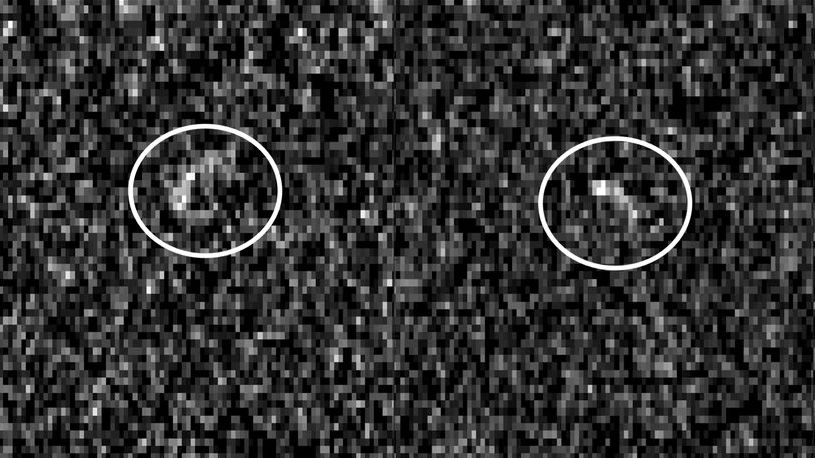Crew members aboard the International Space Station conducted scientific investigations during the week of May 16 that included examining changes in carotid arteries during spaceflight, demonstrating wireless infrastructure for a wearable health monitoring system, and collecting measurements to track how crew members adapt to life in space.
Read MoreMonth: May 2022
The ‘doorway’ seen on Mars is not for aliens. Here’s how it really formed.
The Mars Curiosity rover’s Mast camera snapped this intriguing image of the Red Planet, showing a “doorway” structure, on May 7, 2022, or Sol 3466 in Martian days. (Image credit: NASA/JPL-Caltech/MSSS) No, this is NOT a doorway for Martians. Although the internet erupted on Thursday after a photograph from NASA’s Curiosity rover appeared to show an “alien door,” experts are pretty sure it’s just a natural feature of the Martian landscape. “This is a very curious image,” British geologist Neil Hodgson, who has studied the geology of Mars, told Live…
Read MoreStarliner Launches to Space Station
Boeing’s CST-100 Starliner spacecraft launched from Space Launch Complex 41, Thursday, May 19, 2022.
Read MoreOn This Day In Space: May 20, 1978: NASA launches Pioneer Venus Orbiter
On May 20, 1978, NASA launched a spacecraft to Venus. The mission was called Pioneer-Venus 1, but it’s also known as the Pioneer Venus Orbiter. This was the first of two spacecraft that made up the Pioneer Venus mission. Pioneer Venus 2 launched a couple months later, and that spacecraft dropped five probes onto the surface of Venus. NASA called this the Pioneer Venus Multiprobe. The orbiter was designed to study the atmosphere of Venus. It was a solar-powered cylinder about the size of a hot tub. The 10 Weirdest…
Read MoreWild Apophis asteroid spacecraft concept would loft tiny, laser-driven probes for 2029 flyby
An early-stage mission concept could see laser-driven light-sail probes visit a notorious asteroid. The space rock Apophis, which poses no threat to Earth whatsoever for at least 100 years, will make a harmless but very close flyby of our Earth in 2029. Scientists have already figured out a way to visit Apophis after the flyby: NASA’s OSIRIS-REx spacecraft will visit the asteroid after dropping off samples from another space rock at Earth, the agency decided in April. But 2029 might be just enough time to squeeze out a few more mission…
Read MoreThis Week’s Sky at a Glance, May 20 – 28
The advancing spring sends Vega high and Capella low. The Coma Berenices cluster glitters shyly way up, big and dim. Glance up anytime to check on changing Beta Lyrae. And now in the dawn, Jupiter aligns with Mars. The post This Week's Sky at a Glance, May 20 – 28 appeared first on Sky & Telescope.
Read MoreStarliner Launches to Space Station on Uncrewed Flight Test for NASA
Boeing’s CST-100 Starliner is in orbit, heading for the International Space Station following launch Thursday of the next-generation spacecraft on a United Launch Alliance (ULA) Atlas V rocket on a mission designed to test the end-to-end capabilities of the crew-capable system as part of NASA’s Commercial Crew Program.
Read MoreNASA, Partners to Host CAPSTONE Prelaunch Media Teleconference
NASA will host a media teleconference with partners Advanced Space and Rocket Lab at 3 p.m. EDT Wednesday, May 25, in advance of the Cislunar Autonomous Positioning System Technology Operations and Navigation Experiment (CAPSTONE) launch, scheduled for no earlier than Tuesday, May 31.
Read MoreGlimmering Hubble Space Telescope photo shows stunning starburst effect
The iconic Hubble Space Telescope has captured a glimmering new photo of a densely packed region of stars located in the constellation Sagittarius. The grouping of stars is a globular cluster known as NGC 6558, which lies 23,000 light-years from Earth. At this distance, the cluster resides closer to the center of the Milky Way than Earth does, according to a statement from the European Space Agency (ESA), which released the image May 16. The new photo was taken by the Hubble Space Telescope‘s Advanced Camera for Surveys, which is…
Read MoreNASA, Partners Offer Global View of Environmental Changes
Continuing the collaboration that produced the COVID-19 Earth Observing Dashboard in 2020, NASA and its international partners in Europe and Japan have combined the collective scientific power of their Earth-observing satellite data in expanding the online resource to document a broad array of planet-wide changes in the environment and human societ
Read More
